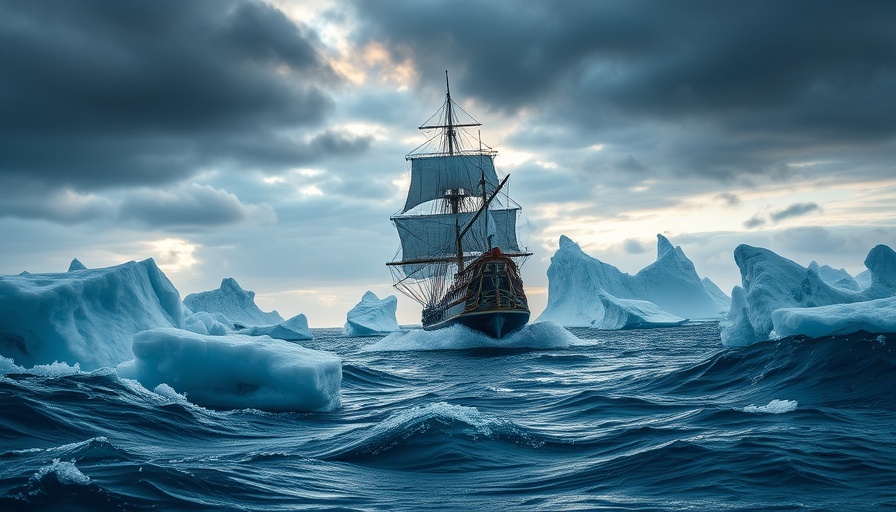
A Glacial Shift: Understanding Ice Piracy in Antarctica
Researchers have made a fascinating discovery in Antarctica, observing a glacier engaging in 'ice piracy'—a phenomenon where one glacier steals ice from another. This unprecedented observation, made over a brief span of less than 18 years, provides new insights into the dynamics of Antarctic ice flow and its implications for global sea levels.
Revolutionary Findings in a Changing Environment
The recent study conducted by the University of Leeds highlights significant changes in the speed of several ice streams in West Antarctica. Notably, these changes have occurred in a timeframe that was previously thought to be far too short for such drastic ice movements.
Data from high-resolution satellites show that one of the glaciers, Kohler East, has sped up significantly, flowing almost 560 meters per year faster since 2005. This remarkable speed, equivalent to the length of seven football pitches in a year, challenges long-held beliefs about glacier flow rates and the impacts of climate change.
Impact of Climate Change on Antarctic Glaciers
As climate change accelerates the melting of Antarctic glaciers, understanding these changes has become a priority. The term 'ice piracy' illustrates how interconnected and vulnerable these massive ice formations are. The Kohler West glacier, which has begun to experience a slowdown by about 10%, demonstrates this interconnectedness. As Kohler East pulls away and absorbs ice from its neighbor, the complexity of glacier interactions reveals potential outcomes for global sea levels.
This is not an isolated incident; scientists now observe similar trends among various glaciers across Antarctica, which have started to respond to rising temperatures by moving more rapidly into the ocean. The melting of these ice streams raises serious concerns for coastal areas worldwide.
What Ice Piracy Means for Future Research and Local Communities
With these rapid changes, researchers stress the need for ongoing study and observation. As residents of Dallas consider their local environment, the implications of glacier dynamics might seem distant, yet they are directly connected to global climate patterns impacting weather, sea levels, and even local economies through shifts in agricultural and coastal practices.
Understanding phenomena like ice piracy can foster a greater appreciation for local environmental efforts and renewable initiatives, as cities like Dallas face their own set of challenges related to climate change.
Curiosity & Engagement: How Local Communities can Connect with Global Issues
For those living in urban environments like Dallas, it's essential to recognize how far-reaching these environmental issues can be. By fostering connections between local and global environmental concerns, cities can create a collective effort towards sustainability and adaptation. As Dallas residents take action to understand their local ecosystem, they may begin to engage with broader environmental initiatives, thereby enhancing their quality of life and future resilience.
The Ripple Effect: Beyond Antarctica
The interplay of these ice masses serves as a reminder that resource management and climate action are crucial -- not just locally, but globally. Each individual’s effort towards sustainability, whether through community engagement in Dallas or supporting environmental policy, contributes to a larger movement countering the effects witnessed in places like Antarctica.
Final Thoughts: The Global Commitment to a Sustainable Future
As we continue to monitor and learn from events like ice piracy, staying informed about climate science becomes crucial. The actions we take today, whether through supporting local initiatives in Dallas or advocating for climate-friendly policies, shape the future health of our planet.
Understanding global phenomena not only nurtures global citizenship but also fosters personal investment in local issues, enriching life in spaces like Dallas and beyond.
 Add Element
Add Element  Add Row
Add Row 



 Add Row
Add Row  Add
Add 


Write A Comment